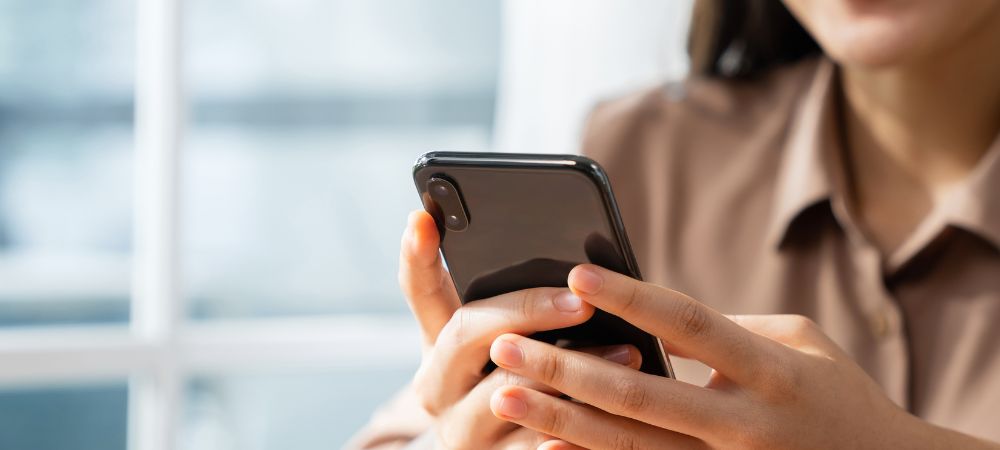

Sure, here's a short essay for you:
---
The Importance of Timing in Social Media Engagement can't be overstated. When it comes to post timing optimization, getting the timing right can make or break your social media strategy. Now, you might think that it's not such a big deal when you hit 'post,' but oh boy, you'd be wrong!
Get access to additional information click on this.
First off, let's talk about audience behavior. People don't log onto their social media accounts at random times; they have patterns. You've probably noticed yourself checking Instagram during lunch breaks or scrolling through Facebook before bed. If you're posting when your audience isn't online, they're likely missing out on what you've got to say. It's like throwing a party when everyone's asleep-pretty pointless.
Then there's the competition to consider. Your content isn't the only thing that's vying for attention in those crowded feeds. By understanding peak hours and posting accordingly, you increase the chances of standing out among all the noise. If you're thinking that quality trumps timing every time, well...think again! Even the most brilliant post won't get far if no one sees it.
And don't forget about algorithms! These pesky little things are always changing how content is prioritized in people's feeds. Posting at optimal times helps ensure that your content gets seen by more people organically. It's not just about who's online; it's also about how those platforms decide to showcase your posts.
But hey, let's not pretend this is an exact science either. What works for one brand might not work for another because audiences differ from one corner of the web to another. So while there are general guidelines-like avoiding late-night posts unless you're targeting insomniacs-you've gotta do some trial and error too.
Yet despite all these factors pointing toward careful planning and strategic execution, many brands still overlook timing as a crucial element of their social media strategy-and they're paying the price for it! Don't let that be you.
So yeah-it may sound simple but nailing down the best times to post requires research and a bit of intuition too (yes really!). It ain't rocket science but ignoring it could mean wasting all your creative efforts on posts nobody's gonna see.
In conclusion? Don't underestimate the power of good timing in social media engagement; it's way more important than folks often give it credit for!
---
When it comes to Post Timing Optimization, understanding the Factors Influencing Optimal Post Times is like trying to hit a moving target. It ain't as simple as just throwing up a post whenever you feel like it. There are so many variables at play that it's almost mind-boggling.
First off, one of the biggest factors is your audience's behavior. People don't check their social media at random times; they have specific habits and routines. For instance, if your target audience is primarily working professionals, posting during business hours might not be the best idea. They're busy with meetings and tasks and won't see your post until later in the evening or maybe even early morning before work starts.
On top of that, different platforms have different peak times. What works on Twitter might be a complete flop on Instagram or LinkedIn. Oh, and let's not forget about time zones! If you're targeting a global audience, you'll need to juggle multiple time zones to ensure everyone gets a chance to see your content when they're most active.
Content type also plays a crucial role here. A quick meme or funny gif might get more engagement during lunch breaks when people are looking for light-hearted distractions. However, an in-depth article or video will probably perform better over weekends when folks have more free time to dive into longer content.
Then there's competition – oh boy! The digital space is crowded with posts vying for attention every second of every day. Posting when everyone's online sounds good in theory but can mean your post gets drowned out by all the noise. Sometimes it's actually smarter to post during less crowded times so that yours stands out more.
You'd think analytics would make this easier, right? While they do help – providing insights into past performance and engagement rates – they're not foolproof either. Algorithms keep changing which makes chasing optimal post times feels like running after shadows sometimes.
And hey, let's talk about spontaneity for a sec! While planned posts are great for consistency, spontaneous ones can capture real-time trends or events that scheduled posts simply can't compete with.
So yeah, figuring out those optimal post times isn't exactly straightforward – it's part science, part art, and maybe even part luck! But if you pay attention to these factors: audience behavior, platform specifics, content type timing competition analytics (with all its quirks), plus add some room for spontaneity...you'll get closer than ever before hitting that sweet spot where your posts shine bright.
When it comes to boostin' your social media engagement, one strategy that often gets overlooked is scheduling posts for optimal times.. Now, you might think this sounds too simple or even trivial, but trust me, it's not.

Posted by on 2024-07-14
Analyzing audience behavior and time zones for topic post timing optimization-it might sound like a mouthful, but it's really not rocket science. It's all about understanding when your audience is most likely to engage with your content. But hey, don't get me wrong, it's not just about getting the highest number of likes or shares; it's more nuanced than that.
First off, let's talk about audience behavior. People are creatures of habit. They tend to check their social media at specific times of day-maybe in the morning while sipping on coffee or perhaps during a lunch break. If you're ignoring these patterns, you're probably missing out on a lot of potential engagement. And no one wants that, right?
Now, onto the time zones bit. This one's tricky but crucial if you have an international audience. You can't just post something at 9 AM your local time and expect everyone around the world to see it immediately. Nope! That's not how it works. You have to consider what time it is in different parts of the globe where your followers are based.
Let's say you're in New York and you've got a sizable following in London as well as Tokyo. Posting at 9 AM Eastern Time might be perfect for folks in London who are having their afternoon tea-but for those in Tokyo? They're probably asleep! So, what do you do? Well, you either schedule multiple posts targeting different regions or find a sweet spot that works reasonably well for everyone involved.
Oh boy, don't even get me started on weekends vs weekdays! Audience behavior changes drastically between workdays and weekends too. People generally have more free time on weekends but they also might be busier with family activities or outings.
One common mistake is thinking one-size-fits-all when it comes to posting times. It doesn't work like that! Each platform has its own peak times based on its user base's habits-Facebook isn't Instagram which isn't Twitter which isn't LinkedIn!
So what's the takeaway here? You've got to analyze both when your audience is online and what part of the world they're logging in from before hitting that "post" button. Experiment with different times and keep an eye on analytics to see what works best.
There ya go-a blend of observation and data can guide you towards smarter posting strategies without pulling your hair out over complex algorithms or fancy terms like 'engagement metrics' (although they do matter). Just remember: Timing ain't everything but ignoring it could mean lost opportunities for connecting with your audience.
And oh! Don't stress too much if something doesn't click right away; sometimes it's all about trial and error until you hit that sweet spot where timing meets engagement perfectly.

Sure! Here's a short essay on the topic "Tools and Software for Scheduling Posts for Post Timing Optimization":
---
When it comes to social media, timing's everything. You can't just post whenever you feel like it and expect magic to happen. Nope, that ain't how it works. If you've ever wondered why your posts aren't getting the engagement they deserve, it's probably 'cause you're not hitting that sweet spot when your audience's most active.
Now, let's talk about tools and software for scheduling posts. Oh boy, there's a bunch of them out there! Tools like Buffer, Hootsuite, and Later make life so much easier by letting you schedule posts ahead of time. These tools don't just save time-they help you avoid the headache of constantly figuring out when to post.
Buffer is a favorite among many marketers. It's pretty straightforward-queue up your content and let Buffer handle the rest. They've got analytics too! So if something ain't working, you'll know right away.
Hootsuite is another big name in this space. It's not just for scheduling; it's got all kinds of features like monitoring mentions and tracking performance across platforms. But hey, don't think it's perfect-it can be a bit overwhelming with all those bells and whistles.
Then there's Later which focuses more on visual platforms like Instagram. It has this cool drag-and-drop calendar feature that makes planning super intuitive.
But let's not kid ourselves-these tools won't do all the work for ya! You still gotta figure out when's the best time to reach your audience. This is where things get tricky but also kinda exciting!
Some tools come with built-in analytics that'll tell you when your followers are most active. Yet again, these numbers might not always hit the nail on the head every single time-it's more art than science sometimes.
It's also worth mentioning that different platforms have different peak times. For instance, what works on Twitter may flop on Facebook or Instagram. So yeah, one-size-fits-all? Not really.
And oh boy-don't forget about time zones! If you've got a global audience, figuring out optimal times becomes even trickier but totally manageable if you're using good scheduling software.
In conclusion (or should I say finally?), investing in good scheduling tools is key but understanding your specific audience behavior takes it up another notch! While no tool guarantees instant success overnight (wouldn't that be nice?), they sure do provide an edge in navigating through social media chaos more effectively.
So go ahead-give these tools a shot but remember: knowing thy audience beats any fancy software any day!
---
I hope this meets your needs!
When diving into the world of social media, one can't ignore the importance of timing. Heck, it's like trying to catch a wave-you've gotta be in the right spot at the right time. So, let's talk about case studies of successful timing strategies for topic post timing optimization.
First off, there's this small bakery in Seattle-let's call it Betty's Bakes. They were struggling to get traction on Instagram. Their posts were visually stunning but hardly anyone saw 'em. Someone suggested they should experiment with their posting times. Instead of sticking to random hours, they started posting around 7 AM and 8 PM when people checked their phones before work or just after dinner. Boom! Engagement shot up by 50%. It wasn't rocket science; it was just about hitting that sweet spot when their audience was most active.
Another interesting example comes from a tech startup-TechFlow-they had an insightful blog but low readership numbers. They tried publishing new articles late at night thinking "Hey, maybe if we do it while everyone's asleep, they'll see it first thing in the morning." Nope! Total flop. Then they shifted gears and started posting during lunch hours (12 PM to 1 PM) and voila! Their blog traffic tripled within a month! Seems like everyone loves some tech reads while munching on their sandwiches.
Then there's Emma's DIY Crafts channel on YouTube which had decent views but wanted more engagement and comments from viewers. She used analytics tools to figure out her audience's peak activity times-it turned out Sunday afternoons were golden because that's when folks had downtime to relax and watch videos without rushin' through them. By consistently uploading new content every Sunday afternoon, she noticed not only an increase in views but also in likes and shares.
All these examples have one thing in common: trial and error mixed with good ol' data analysis. None of these successes happened overnight nor did they stick rigidly to initial plans when things didn't work out as expected.
So yeah, optimizing post timing isn't about guessing or following generic advice blindly; it's all about understanding your specific audience's habits and preferences-and sometimes making a few mistakes along the way ain't so bad either! After all who hasn't learned something valuable from screwing up once or twice?
In essence though, don't underestimate the power of timeliness-it can be your best friend or worst enemy depending on how you play your cards (or schedule those posts!).


When it comes to post timing optimization, there's plenty of common mistakes folks tend to make. It's not always easy figuring out the best time to share your content with the world. But by being aware of some pitfalls and knowing how to dodge 'em, you can get a leg up on maximizing your reach.
First off, one major blunder is not paying attention to your audience's habits. You can't just assume that everyone follows the same schedule as you do. Most people ain't online at 3 AM! If you're posting when your target audience is asleep or busy with their day-to-day activities, you're likely missing out on a lot of engagement. So, it's worth taking some time to analyze when your followers are most active.
Another mistake is thinking that there's a "one-size-fits-all" solution for post timing. What works for one platform might not work for another. For example, while Instagram users might be more active in the evenings, LinkedIn users could be more engaged during business hours. It's essential to tailor your strategy based on where you're posting.
Also, don't fall into the trap of relying too much on automation tools without checking in regularly. Sure, scheduling posts ahead of time can save you loads of effort – but don't forget that algorithms change and trends shift rapidly. Without staying updated and tweaking accordingly, those automated posts might end up going live at times when they're least effective.
It's also crucial not to ignore the importance of consistency over mere timing perfection. Posting sporadically or disappearing for stretches won't help build trust and loyalty among your followers. Even if you've nailed down the ideal timeslot but lack regularity in posting – well, that's half-baked effort right there!
Lastly but definitely not leastly (yes I know it's not a word), avoid neglecting analytics altogether! How will ya ever know what's working if you don't track performance? Keep an eye on which posts perform best at what times and adjust accordingly.
So yeah - don't expect miracles overnight; optimizing post timings takes patience and continuous learning from past missteps! By understanding these common mistakes and making conscious efforts to avoid them - you'll gradually improve your reach and engagement levels significantly!